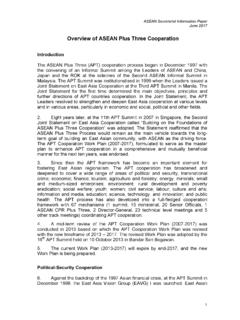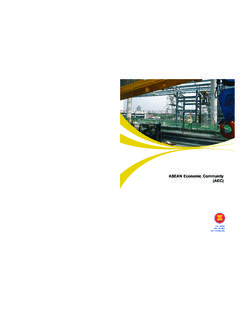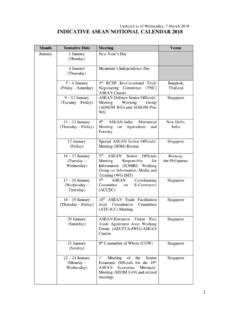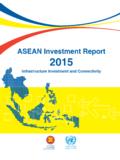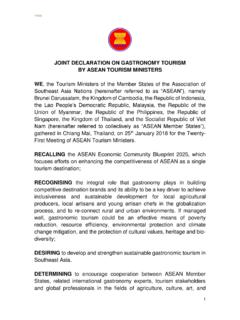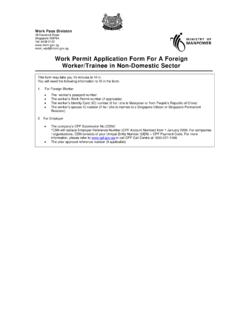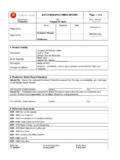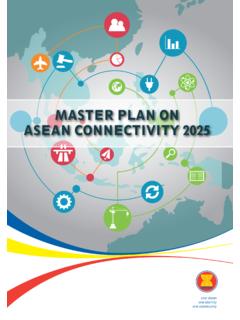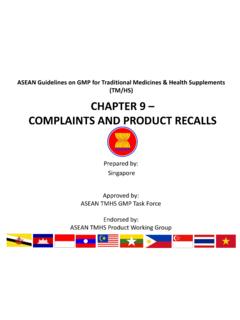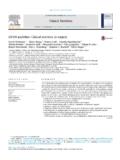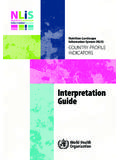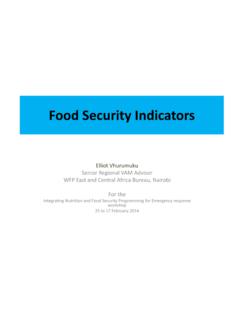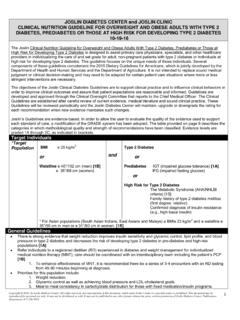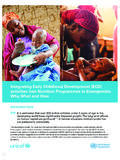Transcription of ASEAN REGIONAL GUIDELINES ON FOOD …
1 Adopted by 39th AMAF Meeting 28 September 2017 ASEAN REGIONAL GUIDELINES ON food security AND nutrition POLICY 2017 2 The Association of Southeast Asian Nations ( ASEAN ) was established on 8 August 1967. The Member States of the Association are Brunei Darussalam, Cambodia, Indonesia, Lao PDR, Malaysia, Myanmar, Philippines, Singapore, Thailand and Viet Nam. The ASEAN Secretariat is based in Jakarta, Indonesia. For inquiries, contact: The ASEAN Secretariat Community Relations Division 70A Jalan Sisingamangaraja Jakarta 12110 Indonesia Phone : (62 21) 724-3372, 726-2991 Fax : (62 21) 739-8234, 724-3504 E-mail : General information on ASEAN appears online at the ASEAN Website: Catalogue-in-Publication Data ASEAN REGIONAL GUIDELINES on food security and nutrition Policy Jakarta: ASEAN Secretariat, October 2017 1.
2 food security and nutrition Policy 2. ASEAN Ministers on Agriculture and Forestry (AMAF)- ASEAN 3 Table of Contents PREFACE .. 4 OBJECTIVES OF THE REGIONAL GUIDELINES .. 5 Background ..5 Objective and Benefit of REGIONAL GUIDELINES ..6 PART 1: OBJECTIVES AND BENEFIT OF food security AND nutrition POLICY Definition of FSN Policy ..6 Main objectives and benefits of FSN policy ..7 FSN Regulatory Body ..8 PART 2: COVERAGE OF food security AND nutrition POLICY .. 8 Agricultural policies ..8 Marketing and pricing policies ..8 Trade policies ..8 Infrastructure Poverty alleviation and social sector policies ..9 Health policies ..9 Education policies ..9 Population policies .. 10 Macroeconomic policies .. 10 Exchange rate policies .. 10 Fiscal policies .. 11 Monetary policies.
3 11 PART 3: ROLE AND RESPONSIBILITY OF food security AND nutrition BODY/INSTITUTIONAL STRUCTURE AND SECTOR REGULATOR .. 11 Roles and responsibilities of FSN Regulatory Body .. 11 Institutional Structure of FSN regulatory body .. 12 PART 4: LEGISLATION AND 12 Relevant Legislation and GUIDELINES for FSN policy .. 12 Review of new or existing legislations .. 13 PART 5: TECHNICAL ASSISTANCE AND CAPACITY BUILDING .. 14 Definition of technical assistance and capacity building .. 14 Guiding Principles on Technical Assistance and Capacity Building .. 14 Different needs that could be met through technical assistance and capacity building programmes .. 14 PART 6: ADVOCACY AND OUTREACH .. 15 Achieving the objectives of FSN Policy .. 15 Resources required for Advocacy and Outreach .. 15 Compliance Programmes.
4 15 PART 7: REGIONAL AND INTERNATIONAL COOPERATION .. 15 Cooperation objectives .. 15 Benefits of cooperation .. 15 Cooperation between FSN regulatory bodies .. 16 Table 1: Indicators for FSN at national and REGIONAL level .. 17 4 PREFACE The ASEAN REGIONAL GUIDELINES on food security and nutrition Policy ( REGIONAL GUIDELINES ) were completed by the ASEAN food security Reserve Board (AFSRB). Established in response to the endorsement of the 1979 Agreement on ASEAN food security Reserve, the AFSRB served as a forum for coordinating periodic exchanges of information on national food policies, undertaking a periodic evaluation of the food situation and prospect in ASEAN region as well as worldwide and examining immediate, short term and long term policy action as may be considered necessary to assure adequate supplies of basic food commodity and providing recommendation for appropriate action to the Government concerned.
5 The collaborative development of the REGIONAL GUIDELINES by 2017 is a priority for AFSRB. Other areas of focus of AFSRB during the next 10 years include the implementation of the Vision and Strategic Plan for ASEAN Cooperation in food , Agriculture and Forestry, 2016-2025 and the ASEAN Integrated food security (AIFS) Framework on food security , the Strategic Plan of Action on food security , 2015-2020. For the purpose of the REGIONAL GUIDELINES , food security and nutrition (FSN) policy is defined as those government measures that directly affect the behavior of different stakeholders (amongst other producers, farmers and regulators). FSN policy basically covers key elements to put in place a set of policies that promote food security and nutrition in ASEAN . The REGIONAL GUIDELINES are based on countries/ REGIONAL experience and international best practices.
6 They set out different policies and institutional options that serve as reference guides for AMSs in their efforts to ensure FSN. The REGIONAL GUIDELINES are not intended to be a full or binding statement on FSN. The REGIONAL GUIDELINES will help increase AMSs awareness of the importance of FSN policies, with a view to stimulating the development of best practices and enhancing cooperation between ASEAN Member States. The REGIONAL GUIDELINES , which are public document, will be a living reference as AFSRB will update them frequently to reflect any changes and development in ASEAN , and international/ REGIONAL best practices. 5 OBJECTIVES OF THE REGIONAL GUIDELINES Background World Leaders at the 2012 Conference on Sustainable Development (Rio+20) reaffirmed the right of everyone to have access to safe and nutritious food , consistent with the right to adequate food and the fundamental right of everyone to be free from hunger.
7 The UN Secretary-General s Zero Hunger Challenge launched at Rio+20 called on governments, civil society, faith communities, the private sector, and research institutions to unite to end hunger and eliminate the worst forms of malnutrition. The Sustainable Development Goal to End hunger, achieve food security and improved nutrition and promote sustainable agriculture (SDG2) recognizes the inter linkages among supporting sustainable agriculture, empowering small farmers, promoting gender equality, ending rural poverty, ensuring healthy lifestyles, tackling climate change, and other issues addressed within the set of 17 Sustainable Development Goals in the Post-2015 Development Agenda. The Zero Hunger Challenge has since garnered widespread support from AMSs and other entities. It calls for: (i) Zero stunted children under the age of two (ii) 100% access to adequate food all year round (iii) All food systems are sustainable (iv) 100% increase in smallholder productivity and income and (v) Zero loss or waste of food .
8 Future food security challenges include population growth, pressures on natural resources and ecosystem services, and adverse impacts of climate change on agriculture, affecting growing conditions and making adaptation measures necessary. Moreover, key issues in the current food security agenda, such as nutrition , price volatility, social protection and safety nets, biofuels, food safety, research and innovation, large-scale land acquisition, and the Right to food concept need integration into an overall policy framework. FSN is about ensuring that everybody is able to access sufficient, affordable and nutritious food . ASEAN seeks to build resilience to food crises and help AMSs ensure that no one is left hungry. In particular, fighting under- nutrition is vital to give the ASEAN 's poorest children a chance to lead healthier lives and learn.
9 In 2014, the 36th Meeting of ASEAN Ministers on Agriculture and Forestry endorsed the new ASEAN Integrated food security (AIFS) Framework and Strategic Plan of Action food security (SPA-FS) 2015-2020, which incorporates a new component on nutrition to enable ASEAN to address new developments and challenges in the realisation of the common goal for sustainable food security and nutrition . At the 24th ASEAN Summit, the ASEAN Leaders reaffirmed to promote a common and unified position to ensure sustainable food security and nutrition in ASEAN . In 2015, the 37th Meeting of ASEAN Ministers on Agriculture and Forestry issued the Statement of ASEAN Ministers on Agriculture and Forestry on food security and nutrition to ensure sustainable supply of sufficient, affordable, safe and nutritious foods that meet the dietary requirements of increasing populations in the region.
10 In 2016, SOM AMAF Leaders adopted the Matrix of Key Areas of Cooperation and Joint Activities for ASEAN Multi-Sectoral Cooperation on food security and nutrition with nine (9) priority areas. At the Preparatory Senior Officials Meeting of the Thirty Eighth Meeting of the ASEAN Ministers on Agriculture and Forestry (PrepSOM-38th AMAF), held on 3-4 October 2016 in Singapore, SOM-AMAF Leaders agreed in principle to the development of the ASEAN GUIDELINES on food nutrition -Related Policies. The specific name and detail of the GUIDELINES would be further agreed by the ASEAN food security Reserve Board (AFSRB). Considering the development of the food security and nutrition in ASEAN , the AFSRB agreed to develop the document, namely ASEAN REGIONAL GUIDELINES on food security and nutrition Policy . Subsequently, the REGIONAL GUIDELINES was endorsed by the 39th AMAF Meeting in September 2017, in Chiang Mai, Thailand.
